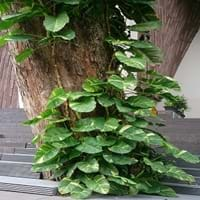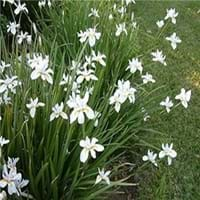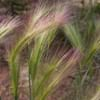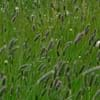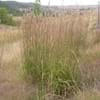Life Span
Perennial
Perennial
Type
Vines
Tender Perennial
Origin
Australia, China, India, Japan
Southern Asia
Types
Marble Queen, species itself, Neon, all-green
African iris, Large wild iris, Cape iris
Habitat
Humid climates, Tropical regions
Coastal Regions, Forest margins, Slopes
USDA Hardiness Zone
10-11
9-11
AHS Heat Zone
12-10
12-10
Sunset Zone
Not available
H1, H2, 8, 9, 12, 13, 14, 15, 16, 17, 18, 19, 20, 21, 22, 23, 24
Habit
Prostrate/Trailing
Clump-Forming
Minimum Height
Not Available
Flower Color
White
White, Yellow, Blue, Violet
Flower Color Modifier
Not Applicable
Bicolor
Fruit Color
Yellow Brown
Green, Brown
Leaf Color in Spring
Yellow
Green, Gray Green
Leaf Color in Summer
Light Green
Green, Gray Green
Leaf Color in Fall
Light Green
Green, Gray Green
Leaf Color in Winter
Light Green
Light Green
Leaf Shape
Ovate
Grass like
Plant Season
All year
Spring, Summer, Fall, Winter
Sunlight
Partial shade
Full Sun, Partial Sun, Partial shade
Type of Soil
Loamy
Clay, Loam, Sand
The pH of Soil
Neutral
Acidic, Neutral, Alkaline
Soil Drainage
Light
Average
Bloom Time
Mid Summer
Indeterminate
Tolerances
Dry soil, Shade areas, Sun
Drought
Where to Plant?
Ground, Pot
Ground
How to Plant?
Seedlings, Stem Planting
Seedlings, Stem Cutting, Stem Planting
Plant Maintenance
Medium
Medium
Watering Requirements
Do Not over Water, Never Over-water, Water when top layer of soil becomes dry
Average Water Needs, Water more in summer
In Summer
Lots of watering
Lots of watering
In Spring
Moderate
Moderate
In Winter
Less Watering
Average Water
Soil pH
Neutral
Acidic, Neutral, Alkaline
Soil Type
Loam
Clay, Loam, Sand
Soil Drainage Capacity
Average
Average
Sun Exposure
Full Sun, Partial Sun
Full Sun, Partial Sun, Partial shade
Pruning
Remove damaged leaves, Remove dead branches, Remove dead leaves
Cut or pinch the stems, Remove damaged leaves, Remove dead branches, Remove dead leaves, Remove dead or diseased plant parts, Remove deadheads, Remove short twigs, Remove wet foliage
Fertilizers
All-Purpose Liquid Fertilizer
Apply N-P-K
Pests and Diseases
Mealybugs, Mites, Scale
Red blotch
Plant Tolerance
Drought
Drought
Flowers
Insignificant
Yes
Flower Petal Number
Not Available
Single
Foliage Texture
Medium
Medium
Foliage Sheen
Glossy
Matte
Attracts
Insects
Bees, Butterflies, Flying insects, Insects
Allergy
no allergic reactions
Not Available
Aesthetic Uses
Beautification, Cottage Garden, Landscape Designing, Showy Purposes
Borders, Ground Cover, Showy Purposes, Water gardening
Beauty Benefits
No Beauty Benefits
Not Available
Edible Uses
Yes
Insignificant
Environmental Uses
Air purification, Food for insects, Provides ground cover
Air purification, soil stabilisation, Windbreak
Medicinal Uses
ascites
Not Available
Part of Plant Used
Stem
Flowers
Other Uses
NA
Screen, useful as a ground cover
Used As Indoor Plant
Yes
No
Used As Outdoor Plant
Yes
Yes
Garden Design
Cutflower, Dried Flower/Everlasting, Mixed Border
Bedding Plant, Bog Garden, Container, Groundcover, Mixed Border, Tropical, Water Gardens
Botanical Name
Epipremnum aureum
DIETES grandiflora
Common Name
Hunter's robe, Money plant
Butterfly Iris
In Hindi
मनी प्लांट
तितली आइरिस प्लांट
In German
Geld-Anlage
Schmetterling Iris Pflanzen
In French
usine de l'argent
Papillon Iris Plante
In Spanish
planta de dinero
Planta del iris de la mariposa
In Greek
φυτό χρήματα
Πεταλούδα Iris Φυτών
In Portuguese
planta de dinheiro
Borboleta da planta Iris
In Polish
pieniądze roślin
Butterfly Iris Roślin
In Latin
pecuniam herba
Gloria Iris Planta
Phylum
Magnoliophyta
Magnoliophyta
Class
Liliopsida
Liliopsida
Order
Alismatales
Liliales
Family
Brassicaceae
Iridaceae
Genus
Epipremnum
Dietes Salisb
Clade
Angiosperms, Monocots
Angiosperms, Monocots
Subfamily
Monsteroideae
Iridoideae
Number of Species
Not Available
Importance of Moneyplant and Butterfly Iris
Want to have the most appropriate plant for your garden? You might want to know the importance of Moneyplant and Butterfly Iris. Basically, these two plants vary in many aspects. Compare Moneyplant and Butterfly Iris as they differ in many characteristics such as their life, care, benefits, facts, etc. Every gardener must at least have the slightest clue about the plants he wants to plant in his garden. Compare their benefits, which differ in many ways like facts and uses. The medicinal use of Moneyplant is ascites whereas of Butterfly Iris is Not Available. Moneyplant has beauty benefits as follows: No Beauty Benefits while Butterfly Iris has beauty benefits as follows: No Beauty Benefits.
Compare Facts of Moneyplant vs Butterfly Iris
How to choose the best garden plant for your garden depending upon its facts? Here garden plant comparison will help you to solve this query. Compare the facts of Moneyplant vs Butterfly Iris and know which one to choose. As garden plants have benefits and other uses, allergy is also a major drawback of plants for some people. Allergic reactions of Moneyplant are no allergic reactions whereas of Butterfly Iris have Not Available respectively. Having a fruit bearing plant in your garden can be a plus point of your garden. Moneyplant has no showy fruits and Butterfly Iris has no showy fruits. Also Moneyplant is not flowering and Butterfly Iris is flowering. You can compare Moneyplant and Butterfly Iris facts and facts of other plants too.
